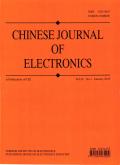A Helmet Detection Algorithm Based on Transformers with Deformable Attention Module
IF 3
4区 计算机科学
Q3 ENGINEERING, ELECTRICAL & ELECTRONIC
引用次数: 0
Abstract
Wearing a helmet is one of the effective measures to protect workers' safety. To address the challenges of severe occlusion, multi-scale, and small target issues in helmet detection, this paper proposes a helmet detection algorithm based on deformable attention transformers. The main contributions of this paper are as follows. A compact end-to-end network architecture for safety helmet detection based on transformers is proposed. It cancels the computationally intensive transformer encoder module in the existing detection transformer (DETR) and uses the transformer decoder module directly on the output of feature extraction for query decoding, which effectively improves the efficiency of helmet detection. A novel feature extraction network named Swin transformer with deformable attention module (DSwin transformer) is proposed. By sparse cross-window attention, it enhances the contextual awareness of multi-scale features extracted by Swin transformer, and keeps high computational efficiency simultaneously. The proposed method generates the query reference points and query embeddings based on the joint prediction probabilities, and selects an appropriate number of decoding feature maps and sparse sampling points for query decoding, which further enhance the inference capability and processing speed. On the benchmark safety-helmet-wearing-dataset (SHWD), the proposed method achieves the average detection accuracy mAP@0.5 of 95.4% with 133.35G floating-point operations per second (FLOPs) and 20 frames per second (FPS), the state-of-the-art method for safety helmet detection.一种基于变形注意模块变压器的头盔检测算法
戴安全帽是保护工人安全的有效措施之一。针对头盔检测中存在的严重遮挡、多尺度、小目标等问题,提出了一种基于可变形注意力转换器的头盔检测算法。本文的主要贡献如下:提出了一种基于变压器的端到端安全帽检测网络结构。它取消了现有检测变压器(DETR)中计算量大的变压器编码器模块,直接在特征提取的输出上使用变压器解码器模块进行查询解码,有效提高了头盔检测的效率。提出了一种新的特征提取网络——带有可变形注意力模块的Swin变压器(DSwin变压器)。通过稀疏交叉窗口关注,增强Swin变压器提取的多尺度特征的上下文感知,同时保持较高的计算效率。该方法基于联合预测概率生成查询参考点和查询嵌入,并选择适当数量的解码特征映射和稀疏采样点进行查询解码,进一步提高了推理能力和处理速度。在基准安全帽佩戴数据集(SHWD)上,该方法以每秒133.35G浮点运算(FLOPs)和每秒20帧(FPS)达到95.4%的平均检测精度mAP@0.5,这是目前最先进的安全帽检测方法。
本文章由计算机程序翻译,如有差异,请以英文原文为准。
求助全文
约1分钟内获得全文
求助全文
来源期刊

Chinese Journal of Electronics
工程技术-工程:电子与电气
CiteScore
3.70
自引率
16.70%
发文量
342
审稿时长
12.0 months
期刊介绍:
CJE focuses on the emerging fields of electronics, publishing innovative and transformative research papers. Most of the papers published in CJE are from universities and research institutes, presenting their innovative research results. Both theoretical and practical contributions are encouraged, and original research papers reporting novel solutions to the hot topics in electronics are strongly recommended.
 求助内容:
求助内容: 应助结果提醒方式:
应助结果提醒方式:


